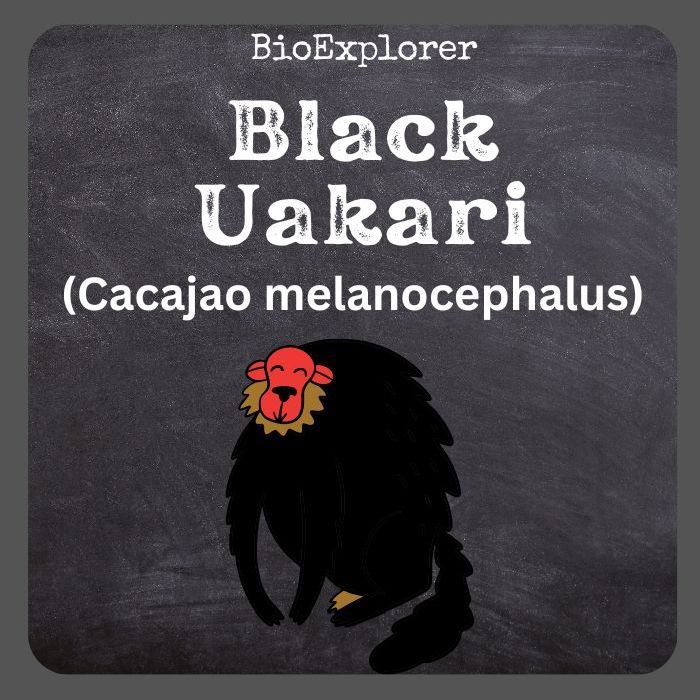
| Animalia | Primates | Pitheciidae | Cacajao | Cacajao melanocephalus |

- Common Name: black uakari
- Taxonomy Classification Year: 1812
- Monkey Size: 36.5 to 48.5 cm (14.37 to 19.09 in)
- Skin Color(s): Deep brown
- Habitat: Rainforest
- Diet: Herbivorous
- Native Countries: Colombia, Venezuela, Brazil
black uakari Distribution
Black Uakari Characteristics
Also called the golden-backed black uakari, golden-backed uakari, and Homboldt’s black-headed uakari, the black uakari[1], is a species native to southwestern Venezuela, southeastern Colombia, and northwestern Brazil.
- The black uakari has a short tail relative to its body size, with a tail length of less than 50 percent of the combined body and head length. In addition, its tail is not prehensile.
- The species is further divided into 2 subspecies: C. m. ouakary is distinguished by a yellowish or golden nape and mid-dorsum from C. m. melanocephalus, in which these body regions are black to reddish-brown.
- The rest of the body is dark brown, except for the abovementioned areas that distinguish the subspecies.
- The lower jaw is deep in the region of the symphysis and exceptionally robust.
Black Uakari Facts
- The face of Cacajao melanocephalus is black and bare, hence the common name “black uakari” or “black-faced uakari“. The hands and lower limbs are black too.
- Although their canines are known to be up to 14 mm long, like their incisors, they are a critical food specialization, allowing them to consume hard fruits and thick-shelled seeds.
- Social grooming is this primate’s most common tactile behavior. In addition to strengthening social bonds, social grooming helps remove parasites and dead skin cells.
- The females issue a scent to attract a male suitor to reproduce.
- Because they often eat ripe fruit and fruit seeds, the black uakari, like most frugivores, plays a vital role in seed dispersal.
Suggested Reading: All Types of Monkeys
Cite This Page
APA7MLA8Chicago
BioExplorer.net. (2025, December 18). Black Uakari. Bio Explorer. https://www.bioexplorer.net/animals/mammals/monkeys/black-uakari/.
BioExplorer.net. "Black Uakari" Bio Explorer, 18 December 2025, https://www.bioexplorer.net/animals/mammals/monkeys/black-uakari/.
BioExplorer.net. "Black Uakari" Bio Explorer, December 18 2025. https://www.bioexplorer.net/animals/mammals/monkeys/black-uakari/.











